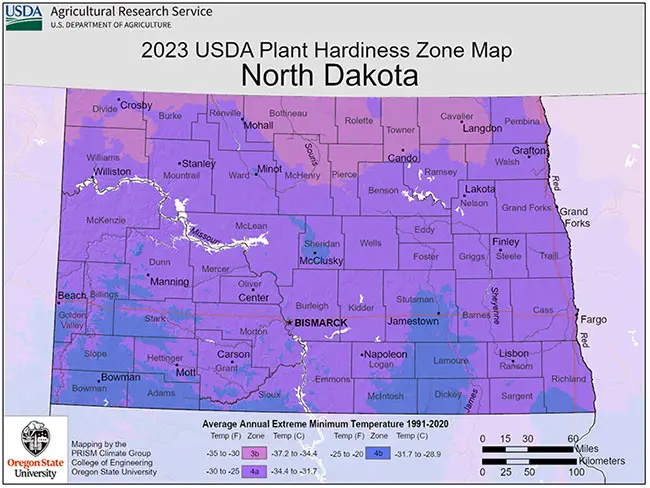
North Dakota’s climate is simply too cold to support the growth of palm trees. The state experiences a continental climate characterized by hot summers and cold winters. In January, the average temperature drops to a chilly 7°F (-14°C), while July brings an average temperature of 69°F (21°C).
North Dakota is known for its extreme weather, with very cold winters featuring below-freezing temperatures and heavy snowfall. The state also encounters freezing rain, ice, sleet, and blizzards.
From late spring to early fall, North Dakota experiences 22–34 days of thunderstorm activity and witnesses 13 tornadoes per year.
The highest temperature ever recorded in North Dakota reached a scorching 121°F (49°C), while the lowest plummeted to a bone-chilling -60°F (-51°C). USDA hardiness zones in North Dakota range from 3a to 4b.
Growing Palm Trees in North Dakota
Given that most areas of North Dakota are situated within the cold zone 3, the only feasible way to cultivate palm trees in the state is to grow them indoors, providing the necessary warmth and protection from harsh outdoor conditions. Here are some great indoor palms:
- Areca Palm Tree – Zones 9a – 11 (20 to 25 F)
- Chinese Fan Palm Tree – Zones 8a – 11 (10 to 15 F)
- Kentia Palm Tree – Zones 9b – 11 (25 to 30 F)
- Lady Palm Tree – Zones 8b – 11 (15 to 20 F)
More Palm Trees»
Major Cities in North Dakota
Bismarck – Hardiness Zone 3a
Fargo – Hardiness Zone 3b
